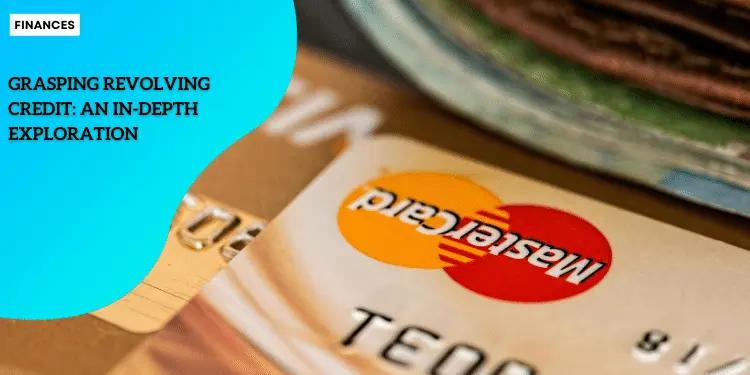Grasping Revolving Credit: An In-Depth Exploration

Anúncios
Exploring the Mechanics, Benefits, and Pitfalls of Revolving Credit
In today’s fast-paced world, convenience reigns supreme.
This extends to our financial lives, where revolving credit has become a ubiquitous tool.
Anúncios
However, wielding this tool effectively requires a clear understanding of its mechanics, potential benefits, and inherent risks.
This comprehensive analysis delves into the intricacies of revolving credit, empowering you to make informed financial decisions and leverage it as a springboard for financial well-being.
Anúncios
Unveiling the Revolving Credit Mechanism: A Line of Trust, Not a Free Pass
Imagine your credit card as a magical vault perpetually refilled with a set amount of money, courtesy of your bank.
This pre-determined limit, known as your credit limit, represents the maximum amount you can borrow.
However, unlike a traditional loan with a fixed repayment schedule, revolving credit operates differently.
When you utilize your credit card and don’t settle the entire balance by the due date, the magic fades – revolving credit kicks in.
This unpaid portion incurs interest, often exceeding a hefty 20% annually.
Here’s the crucial caveat: interest is compounded monthly.
This translates to interest accumulating not only on the initial amount owed but also on the accrued interest itself, creating a snowball effect that can quickly snowball into a significant financial burden.
Safeguarding Consumers: Regulations and Protections
Recognizing the potential pitfalls of revolving credit, regulatory bodies implemented safeguards in 2017 to shield consumers from predatory practices.
These regulations establish a 30-day repayment window, encouraging full payment within this timeframe.
Should the balance remain unpaid after 30 days, credit card issuers are mandated to offer alternative repayment options, albeit potentially at even higher interest rates.
Steering Clear of Revolving Credit: Strategies for Responsible Card Usage
The key to harnessing the power of revolving credit without succumbing to its perils lies in responsible card management.
Here are some practical steps to cultivate effective card usage:
Craft a Budget and Set Spending Limits: Building a realistic budget that outlines your income and expenses is paramount.
Based on this blueprint, establish spending limits for your credit card and meticulously adhere to them.
Throughout the month, diligently track your spending to ensure you stay within these predetermined boundaries.
Embrace Transparency: Monitor Your Statements: Regularly analyzing your credit card statements is crucial for identifying any errors or discrepancies.
Early detection of potential issues can prevent unnecessary interest charges.
Don’t just skim the bottom line – delve deeper into the details of your transactions.
This comprehensive review will illuminate your spending patterns and empower you to pinpoint areas for potential reduction.
Fight the Urge: Resist Impulse Purchases: Curb the allure of impulse purchases.
Before swiping your card, ask yourself a critical question: Is this item truly essential and does it align with my budget?
Implement strategies to curb impulsive spending, such as imposing a waiting period for non-essential purchases or utilizing cash for everyday expenses.
Practical Solutions When Facing High Balances: A Light at the End of the Tunnel
If you find yourself grappling with overwhelming credit card debt, don’t despair.
Here are alternative solutions to explore:
Negotiate with Your Issuer: Reach out to your card issuer and transparently explain your situation.
In some instances, they may be willing to extend a helping hand by lowering your interest rate or offering a personalized repayment plan.
Be prepared to demonstrate your financial hardship and unwavering commitment to adhering to the repayment plan.
Explore Balance Transfer Options: Research the possibility of transferring your credit card balance to a card with a lower introductory interest rate.
This temporary reprieve can provide invaluable breathing room while you strategically focus on paying down the debt.
However, be mindful of potential balance transfer fees and ensure you have a clear plan to settle the debt before the introductory period expires.
The Perils of Revolving Credit: A Double-Edged Sword
The most significant threat associated with revolving credit is the potential for spiraling debt.
High interest rates can quickly transform a manageable balance into a suffocating financial burden.
Furthermore, prolonged reliance on revolving credit and a history of late payments can adversely impact your credit score, hindering your ability to secure loans with favorable terms in the future.
A poor credit score can also lead to higher interest rates on future loans, creating a vicious cycle of debt.
Responsible Credit Usage: The Key to Unlocking Financial Freedom
By wielding your credit card strategically and making informed financial decisions, you can harness the convenience of revolving credit to your advantage.
Prioritize making full and timely payments on your credit card bill.
Regularly monitor your spending to maintain control over your finances.
Remember, responsible credit card usage empowers you to build a positive credit history, opening doors to future financial opportunities like securing a mortgage.
This careful management of revolving credit ensures that it serves as a beneficial financial tool rather than a gateway to debt, thus providing a pathway to achieving long-term financial stability and success.





